I’ve had this Moleskine Sketch Album for quite a while and haven’t gotten around to reviewing it, mainly because I knew I’d probably be disappointed! Moleskine’s quality has been waning for years, and though their regular sketchbooks have been my favorite notebooks for a very long time, I’ve refused to buy any of the currently produced ones because they just aren’t the same anymore. Luckily, I have quite a stockpile of old ones! (After this post where I inventoried my spares and worried they might not last until I was in my 90s, I snagged quite a few more on eBay so now I probably have twice as many!)
Anyway, when the sketch album was first announced, I thought it was a good thing– I’d actually thought Moleskine should make a softcover sketchbook, thinking it could be a good alternative for on-the-go use. But the Sketch Album turns out not to be Sketchbook innards with a soft cover– it’s more like a Moleskine Cahier with upgraded paper.
When you open the shrinkwrap, you’ll notice the cardboard cover, which is just like the Cahiers, not the soft faux-leather used on the softcover notebooks. As usual there is stitching on the spine, and a pocket in the back, which is too tight for tucking much more than a few small sheets. When you remove the paper band, you’ll see that the back has been designed with some reference info and tools. I’m not sure how useful these are to most people.
Since Moleskine started labeling various notebooks as an “Art Plus” collection, they’ve started noting paper weights on the packaging, hoping to appeal to those of us who care about these things. The Sketch Album is 120 GSM. That sounds good compared to most upscale pocket notebooks, which tend to be in the 80-100 GSM range, but it’s a lot less than the regular Moleskine Sketchbook, which is 165 GSM. The difference is obvious– the paper in the sketch album feels thinner and floppier. Each sheet is perforated.
When I did my pen tests, I noticed that the sketch album paper actually feels softer to write on– I could hear the pen tips tapping more audibly on the regular sketchbook. The comparison below features an old “Modo e Modo” Moleskine rather than a current production sketchbook. You can see right away how much worse the show-through and bleed-through is on the sketch album, with just a couple of exceptions. The album wins on how much the Accu-liner marker spreads when it is held on a spot for 5 seconds– the Modo sketchbook soaked it up and made a much bigger dot. And the Super Sharpie seemed to soak into the old sketchbook more too. But otherwise, the album did not do well at all, with fountain pens bleeding and feathering and lots more show-through. I tested some watercolor paints too– Moleskine does not claim that either of these notebooks is meant for watercolors, but I use them in the sketchbooks quite often. In the sketch album, the watercolors seemed to pull up the paper fibers more, creating a speckled texture that is much more noticeable than in the sketchbook.
So would I use this “Art Plus” sketch album for actual art? For pencil sketches, or perhaps fine pen & ink drawings with Pigma Micron pens, yes, I might use it. But I’d be much more likely to use it as an upgrade to the Moleskine Cahier or softcover Reporter Notebook. The sketch album is nicely flexible and pocketable, and the paper feels great to write on with fine point gel ink pens. The paper is a nice step up from regular lightweight Moleskine paper– not enough of a step up to make fountain pen users happy, but others will enjoy it for daily jottings. But if you are an artist who likes the regular sketchbooks, stick with them.
To buy: Moleskine Art Plus Sketchbooks and Albums on Amazon. They also have interesting alternatives like the Leuchtturm Hardcover Pocket Sketchbook Black
, which has 180 GSM paper, and the Pen & Ink Heavy-Weight Blank Sketch Book
— make sure you get the heavy-weight one which has 145 GSM paper– read the full description.


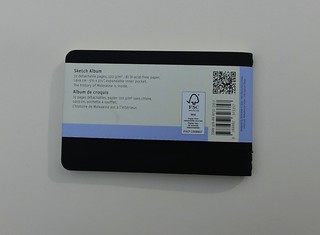


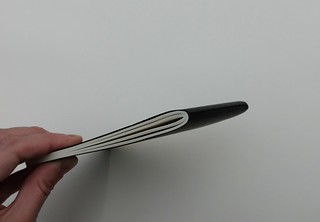

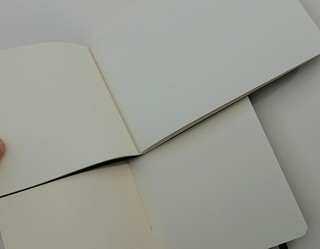
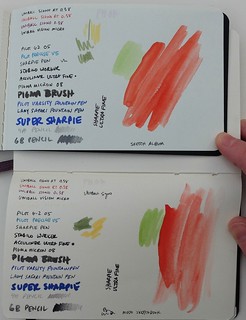
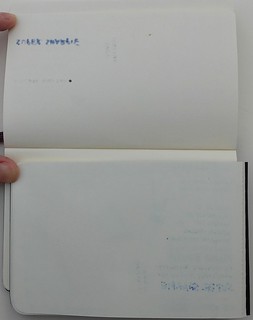
I’ve read the review comparison of the moleskin album and sketchbook. I will not be purchasing the sketch album. I’m very disappointed that their quality has gone down.